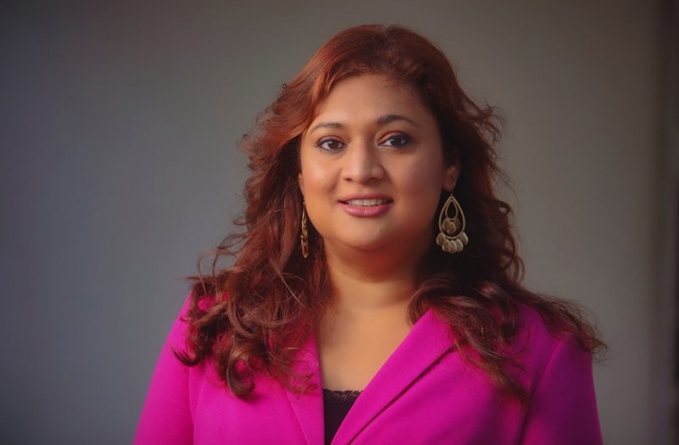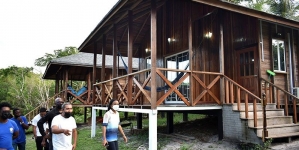Hinterland communities to receive Learning Channel
THE Ministry of Education is putting systems in place for 215 hinterland communities across Guyana to gain access to the Learning Channel.
The roll out of the facility in the hinterland villages is expected to commence as soon as January, 2021, and is parcel to the overall expansion plans for the Channel, which also involves the addition of six more Learning Channels.
Additionally, the ministry plans to include six television sets, a dish to pick up the channels, and solar panel systems to power the equipment to each community.
Speaking with the Guyana Chronicle, Minister of Education, Priya Manickchand, said that the COVID-19 situation has provided an optimum opportunity for the Ministry of Education (MoE) to address gaps in its education delivery systems.
“During this period, we discovered in many respect that the Learning Channel is the only way many students can get extra tuition, specialised tuition, and reinforced tuition. This period has underscored for us how much the Learning Channel can do in various communities,” Manickchand said.
“We have 215 Amerindian villages, and I would like to see before June of next year that all 215 villages have it, so that before the end of next year, the whole country will have access.”
With schools in Guyana closed since March, the Learning Channel formed part of “a blended multifaceted approach” that the MoE implemented in September to officially begin re-engaging learners at public schools.
As part of the approach, since September, the Learning Channel has been broadcasting in a timetable format, with teaching for all of the grades at various points throughout the day.
However, with the public school system catering for 12 levels at the primary and secondary schools, and two levels at the nursery school, balancing programmes for all of the grades did come with its own challenges.
“The problem with one channel trying to cater for 12 grades is that it is not enough because we end up with only one hour or half an hour per grade,” Manickchand explained.
The Learning Channel, which airs on the coast land on Channels 29/80, was established in 2011, as a brainchild of then President, Bharrat Jagdeo, as a means of airing educational programmes to children across the country.
Understanding the limitations of just one channel, to expand the reach of the channel, some $215M was allocated in the National 2020 Budget for the expansion of the facility.
However, during the COVID-19 school closure, one of the biggest concern was how much the situation highlighted the gap in facilities available to school children on the coastland and those in the hinterland.
In addition to timetabled teaching on the Learning Channel, a large percentage of the coastland learners have been engaged by their teachers using online medium such as social media, Zoom and google classroom. However, these options were not as readily available to the hinterland students.
“The hinterland communities mostly do not benefit from internet connectivity or strong enough connectivity for entire classes to learn. They certainly do not benefit from the online lessons that are available to kids on the coast. They also don’t get the benefit of accessing things like YouTube, Google and other research type learning systems that exist through the internet,” Manickchand explained.
As such, the provisions were made for the Learning Channel expansion to now include reaching hinterland communities.
“Because hinterland communities generally cannot access the analog system we have right now, we have decided to go digital, based on advice we have gotten, which will allow us to publish the six channels in the hinterland. For the deep hinterland village where each village is separated by many, many miles, we are going [to] use existing satellites and cater specifically for those villages,” Manickchand elaborated.
Manickchand contended that other technical details such as where in each community the television systems would be set up is still to be worked out, as they would have to all be located at one site to minimise cost.
She informed, however, that the roll out will be done in a phased manner due to limitations in human resources to carry out the project.
“We are hoping to finish at least 20 villages in January. It’s going to be a very quick roll out, but it would only move as quickly as the persons who are rolling it out can move. We only have a few specialised persons in the country that can do this sort of things; so what that means is that they can’t be in 200 places at once. So that’s the only set back,” she said.






















